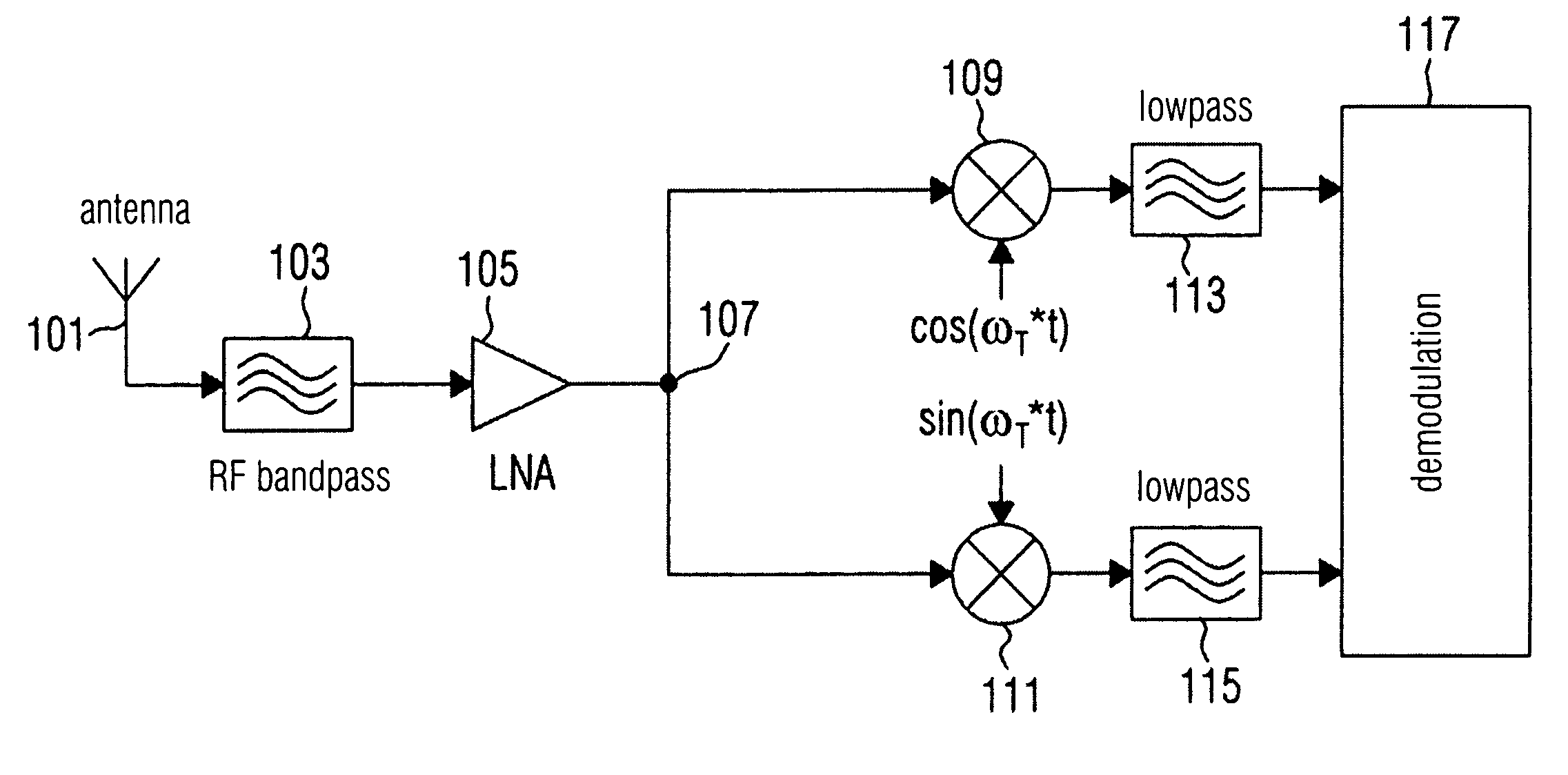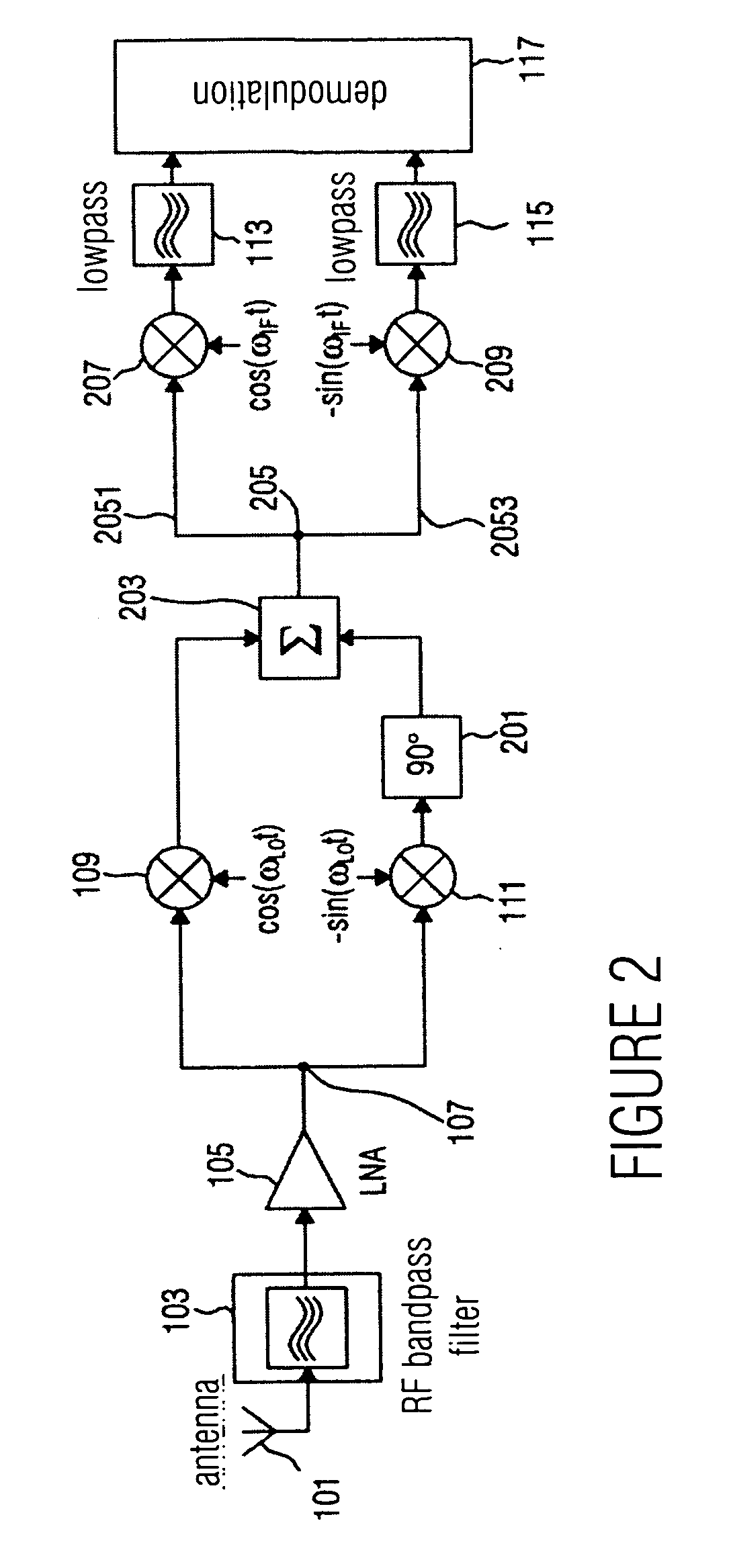Apparatus and method for downward mixing an input signal into an output signal
a technology of input signal and output signal, applied in electrical apparatus, transmission, transmission noise suppression, etc., can solve the problems of difficult generation of high-frequency tunable oscillator frequency, large design challenge of high-frequency receiver, etc., to reduce manufacturing costs, power consumption and area consumption, cost-effective
- Summary
- Abstract
- Description
- Claims
- Application Information
AI Technical Summary
Benefits of technology
Problems solved by technology
Method used
Image
Examples
Embodiment Construction
[0046] In FIG. 4, an embodiment of the inventive device for downward mixing an input signal is illustrated. An input signal is supplied to means 401 for generating a first receive signal 4011 and a second receive signal 4013 on a first intermediate frequency. The first receive signal 4011 and the second receive signal 4013 are received from a converter means 403. The converter means 403 provides a digital representation 4031 of the first receive signal 4011 and a digital representation 4033 of the second receive signal 4013.
[0047] The digital representation 4031 of the first receive signal 4011 is supplied to a phase detection means 405 and a first mixer means 407. The digital representation 4033 of the second receive signal 4013 is supplied to the phase detection means 405 and a second mixer means 409. The embodiment of the inventive device illustrated in FIG. 4 for downward mixing further includes a mixer control means 411 controlling the first mixer means 407 using a first contr...
PUM
 Login to View More
Login to View More Abstract
Description
Claims
Application Information
 Login to View More
Login to View More - R&D
- Intellectual Property
- Life Sciences
- Materials
- Tech Scout
- Unparalleled Data Quality
- Higher Quality Content
- 60% Fewer Hallucinations
Browse by: Latest US Patents, China's latest patents, Technical Efficacy Thesaurus, Application Domain, Technology Topic, Popular Technical Reports.
© 2025 PatSnap. All rights reserved.Legal|Privacy policy|Modern Slavery Act Transparency Statement|Sitemap|About US| Contact US: help@patsnap.com



